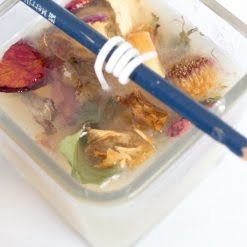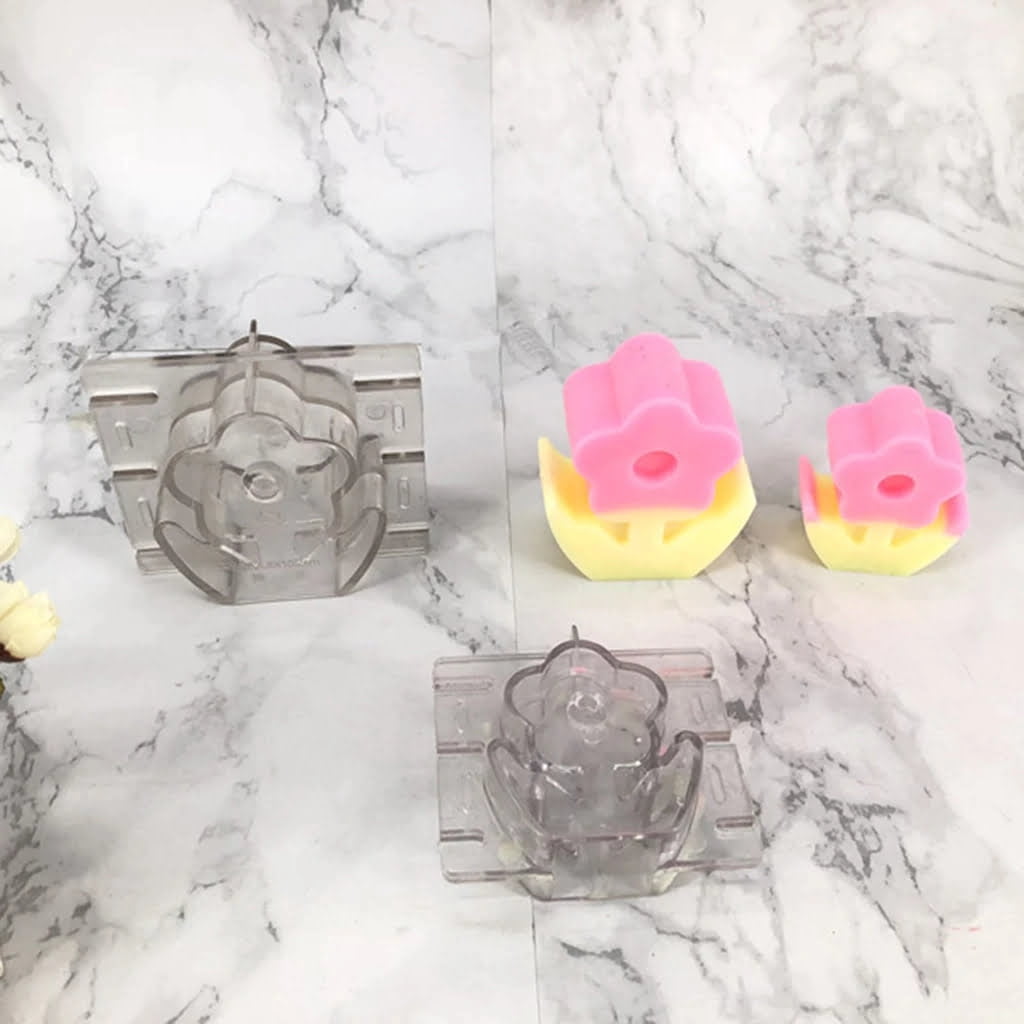Introduction
Paraffin wax is a type of wax that is extremely popular for making candles. It has been used for centuries to make many different types of candles, including natural candles, scented candles, and specialty candles. Paraffin wax offers many benefits when compared to other candle making materials. It is a highly versatile material that offers simple and easy-to-use manufacturing options, it is inexpensive and readily available, and it produces no unhealthy fumes or odor.
In addition to these advantages, paraffin wax can be used in creative ways for producing unique candle designs. It is relatively easy to mold into custom shapes and sizes, providing the opportunity to create different styles of candles such as decorative pillars or tapers. Paraffin can also be mixed with color dyes and scents in order to create completely custom designs suitable for any occasion. Additionally, since paraffin’s melting point ranges from 112F – 120F , it tends to hold its shape longer than other kinds of wax – this makes it an ideal choice for novelty candles like those found at weddings or birthdays. Altogether, using paraffin wax makes creating beautiful and unique customized candle a breeze!
Candle Maker Essentials
One of the best materials you can use to make Paraffin Wax Candles is the paraffin wax itself. For optimal results, especially when making larger candles, it is recommended to use a softer wax with a melting point between 120 – 130 degrees Fahrenheit. This full melt wickless specialty wax has been designed specifically for prime candle making results and will last significantly longer than traditional paraffin.
In addition to the wax itself, other supplies needed for Paraffin Wax Candle Making include candle molds or holders, wick tabs (or if using pre-tabbed wicks, an appropriate sized one for the mold being used), thermometer or temperature gun, wick centering device (if desired) and a pour pot (preferably a double boiler type). Once these items have been acquired all that remains is a heat source such as an electric stove top burner and/or a double boiler setup can be used depending on personal preference.
When it comes to proper technique for melting down Paraffin Wax for Candle Making there are essentially two distinct processes: double boiling and direct pouring. When using the first method the two pots are placed into one another allowing the hot water in the outer pot to gently melt your wax in the inner pot (which should preferably be made of stainless steel or plastic). The second method entails directly melting down your paraffin on low heat until it reaches its liquid state. Because both techniques produce excellent results, it ultimately comes down to personal preference; however double boiling is recommended so as not exceed temperatures above recommended levels.
Once everything is set up and properly prepared simply measure out your paraffin wax and slowly melt it either directly or via double boiling until it achieves its liquid form then carefully pour into your prepped molds with great caution as it will remain very hot long after turning liquid. Finally attach any necessary wicks per instructed guidelines and wait till solid then turn over and remove from mold!
Paraffin Wax Alternatives
Paraffin wax is the most common type of wax used for making candles, but there are other alternatives available. Soy and beeswax candles are becoming increasingly popular, due to their natural ingredients and reliability for producing longer burning times. Paraffin still has a few unique benefits that will keep it as one of the primary candle making materials:
Benefit #1: Cost – When compared to its alternatives like soy, paraffin wax is relatively inexpensive and can produce larger volumes at an economical rate. This makes it especially suitable for production runs or individuals working on large batches of candles.
Benefit #2: Uniformity – Paraffin wax burns in a consistent manner with a steady flame that provides even light throughout the candle burn period. If you combined different wax types in a single candle, they may not provide this uniformity of light production.
Benefit #3: Versatility – There are several colorants, fragrances and additives that can be blended into your paraffin candle creations, making them much more customized than if you were using other types of wax. Additionally, paraffin melts at a lower temperature than soy or beeswax so it’s easier to manipulate when heating it up to create your candle designs.
Candle Making Basics
Paraffin wax is a popular choice in candle-making. It’s easily accessible, inexpensive, and readily accepts colorants and scent for customizing your candles. This guide will provide an in-depth step by step process on how to create Paraffin Wax Candles.
1. Start with Safety– As with any project using heat sources and chemicals, safety should be the primary concern when it comes to making Paraffin Wax Candles. It’s best to always work away from open flames and areas where children or pets can easily interfere with the process.
2. Prepare the Tools – First choose suitable molds for the specific size of candle you intend to create; keep in mind that larger molds require more wax for each candle than smaller molds. Additionally, you also need pure cotton wicks, thermometers (for measuring within the melting range), tart pans/aluminum cake tins for melting wax blocks over a double boiler method or pot plus stove, pouring pitcher, long-handled ladle/spoon or whisk like utensil for stirring molten wax, rigid ruler to measure the length of lamp wick needed per mold per candle and lastly preheat oven at low temperature to speed up cooling time thereafter candle dipping exercise. Furthermore ensure all these items are thoroughly cleaned before use if not new.
3. Melt Wax Slowly – Drop in paraffin blocks one at a time using double boiler method; stir regularly throughout melting process and once completely melted you may add either extra paraffin blocks (to increase thickness) or blended wax substitutes like beeswax and joy wax (*optional). Remember never ever allow temperatures exceeding 190°F as this will alter structural components inside molten wax & end results won’t be favorable thereafter embedding your finished product into chosen mold cavity.
4. Measure Wicks – Lastly cut wicks @ desired lengths + give proper allowance room nearby bottom edges plus permissible dimensional allowance around inner circumference area of your set aside molds too before dipping exercise begins proper thereby allowing sufficient room specially at topmost cavity area surrounding finished product after final nested position taken place adequately by readymade lamplight base item raised up from inner surface area during cooling period starts all over again correctly as per given instructions published everywhere appropriately as expected properly everytime respectively endlessly just like that only please take good care…
Aromatic & Vibrant Enhancements
Paraffin wax is the most common type of wax used to make candles, as it contains no natural oils, making for a longer lasting and less expensive option than other types. However, many people are not happy with the plain scent and color that comes with paraffin wax candles. To enhance the aroma and vibrancy of paraffin wax candles there are several options available to candle makers.
Essential Oils – Essential oils can be added to the melted wax during manufacturing or after to ease a scent into the flame. There are endless choices of essential oils in various fragrances such as floral, eucalyptus, or citrus. These scents linger even when the candle is snuffed out as long as you use high-quality essential oils in your blends.
Fragrance Oils – Similar to essential oils but artificial in origin; fragrance oils offer a broader range of scents than their essential counterparts and come in a variety of vibrant colors that help add interest when poured into an open candle jar. Most fragrance oils will contain a discoloring agent that must be managed much like with regular wicking.
Color – For those looking for bold shades in their candles another great choice is including dye chips into melted wax for solid colors or adding food coloring drops for more delicate coverage distributed evenly throughout the melted wax. To maintain consistency it is important to measure dye chips and food coloring drops properly before pouring them into melted wax during production.
Candle Decorations
Paraffin wax is an ideal material for crafting beautiful and unique candles. Paraffin wax is available in a variety of colors, textures, and sizes to inspire you. With some creative thinking, there are many ways to turn basic paraffin wax into a stunning candle decoration.
For instance, you can use drip designs of paraffin wax to create a pattern along the sides of the candle. The drips can follow downhill or travel up-hill to add texture or create different shapes such as hearts or stars. By layering several colors together you can also create ombre or marbled effects that look captivating in both subtle and flashy shades. Adding hollow shapes throughout your decorations will make your candles look more organic and symmetrical. Drawing on the surface with pencils, markers or paint will give off a delicate charm while glitter adds instant glamour to any design. Lastly, accessories like ribbons, glitter tape and decorative stones make excellent finishes that bring out the true beauty in the candle’s design.
Candles and Time
Paraffin wax candles are a versatile and durable choice for use around the home. When properly cared for, they can last anywhere between six months to five years depending on their size. Here are some tips and tricks to ensure your paraffin candles have a long life:
• Position candles away from drafts and direct sunlight, as this will cause them to melt faster.
•Use an appropriate holder that is close to the same size as your candle. This ensures that the entire wax surface will burn evenly, creating a neat pillar shape.
•Avoid trimming the wicks too often or too short, as this may result in an uneven burning pattern or reduced flame intensity.
•Once your candle has burned down about 1/4 of its total height it’s time to change holders as the wider base of the holder helps stabilize flames better than a narrow base.
•Keep matches and lighters away from children when lighting your candle and remember to never leave lit candles unattended!
•To maintain fire safety always keep the area around the burning candle clean and free of combustible objects like papers, pillows, and curtains.
•When not in use, store paraffin wax candles in cool, dry places away from possible sources of heat or direct sunlight so they do not melt before you’re ready to light them.
Summary & Recommendations
Paraffin wax has numerous advantages as a candle making material. It is available in a variety of colors, melts easily and is resistant to moisture. It also has low fragrance oil adhesion, meaning that any scent you add to your candles burns off quickly. Additionally, paraffin wax will burn slowly and evenly, giving your candles a beautiful flame when lit.
At the same time, paraffin wax is easy to work with, both for beginner and experienced candle makers alike. Working with paraffin wax also ensures that all finished products are of consistent quality and shape. Moreover, it can be re-melted and reused multiple times which means it does not get wasted unnecessarily.
Overall, with its ease of use and vast range of benefits, paraffin wax is the ideal material for anyone interested in experimenting with candle making or starting their own artisanal business! We highly recommend that all budding candle makers try out this versatile material to start crafting beautiful candles today!

Welcome to my candle making blog! In this blog, I will be sharing my tips and tricks for making candles. I will also be sharing some of my favorite recipes.


